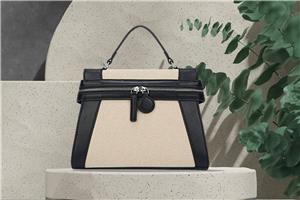From Africa to Colombia: How Raffia and Iraca Shape Artisanal Design
From Africa to Colombia: How Raffia and Iraca Shape Artisanal Design
In the world of natural fibers, raffia and iraca hold special places. These palm-based materials have traveled from the tropics of Africa and South America to influence everything from high-end fashion to traditional home goods. Though they may look similar to the untrained eye, their unique characteristics, cultural significance, and usage in artisanal design are remarkably different. Whether you're a designer, craft enthusiast, or simply fiber-curious, understanding these materials will elevate your appreciation—and your next project.


Quick Comparison Table: Raffia vs. Iraca
| Feature | Raffia | Iraca (Toquilla) |
|---|---|---|
| Origin | Africa (Madagascar, Congo, etc.) | Colombia, Ecuador |
| Plant Source | Raphia palm | Carludovica palmata (Toquilla palm) |
| Processing Method | Dried leaf fibers, manually peeled | Boiled, stripped, and sun-dried young leaves |
| Texture | Coarse, thick, highly flexible | Smooth, fine, soft yet durable |
| Craft Applications | Hats, mats, baskets, garden ties, decor | Fine hats (e.g., Panama hats), accessories |
| Sustainability | Renewable, minimal processing | Artisan-focused, often eco-conscious |
| Common Color Options | Natural tan, easily dyed | Cream-white, often dyed with natural colors |
Plant Origins and Harvesting
Raffia originates from the Raphia farinifera palm, predominantly found in Madagascar and central Africa. The fibers are manually extracted from the underside of the palm leaves. Once harvested, they’re sun-dried and sometimes dyed before use.
In contrast, Iraca, also known as Toquilla straw, comes from the Carludovica palmata, native to Colombia and Ecuador. Unlike raffia, only the young, unopened leaves are used. The preparation process involves boiling, sun-drying, and then splitting the fibers into ultra-thin strands—an artisan skill passed down through generations.
Fiber Properties and Weaving Performance
Raffia is known for being thick, coarse, and flexible. It's perfect for weaving sturdy items like market bags, floor mats, and rustic decor. It can easily be twisted, dyed, or braided, making it popular among crafters for DIY projects.
Iraca, on the other hand, produces a smooth, delicate, yet strong fiber. It's ideal for intricate and fine craftsmanship—most notably, Panama hats (which, despite the name, are handmade in Colombia and Ecuador). Its flexibility allows for tighter, cleaner weaves without sacrificing durability.
Craft Applications: Hats, Bags, Decor, and More
Raffia is your go-to for bold, textured pieces. It's often used for:
Wide-brimmed sun hats
Rustic placemats and baskets
Eco-friendly packaging or floral ties
Woven lampshades and wall decor
Iraca is prized for finesse and finish. Its standout uses include:
Fine Panama hats
Delicate jewelry and accessories
Woven handbags and clutches
High-end home decor like coasters or table runners
Both materials allow for incredible versatility—but the level of detail and refinement typically leans in Iraca’s favor.
Pros and Cons: What Each Material Excels At
Raffia Pros:
Affordable and accessible
Strong and durable
Good for large-scale projects
Easy to dye and manipulate
Raffia Cons:
Coarser finish
Less ideal for intricate work
Iraca Pros:
Smooth texture, high aesthetic appeal
Ideal for refined, detailed pieces
Culturally rich, often handmade
Holds shape well for fine accessories
Iraca Cons:
More labor-intensive to process
Typically higher in cost
Availability can be region-specific
Sustainable Sourcing and Ethical Considerations
Both fibers are renewable and biodegradable, making them eco-friendly alternatives to synthetic materials. However, their environmental impact also depends on how they're harvested and processed.
Raffia harvesting is often done in the wild and involves minimal processing, making it low impact. But sustainability can vary depending on land use and local management practices.
Iraca is deeply rooted in traditional Colombian crafts. Many Iraca-based products are made by small artisan communities, providing vital economic support. Buying fair trade or certified Iraca goods helps preserve indigenous techniques and promotes ethical craftsmanship.
Buying Tips: What to Look for in Quality Raffia or Iraca
When shopping for raffia, check for:
Uniform fiber width
Minimal fraying or breakage
Clean, neutral scent (musty smell may indicate improper drying)
When purchasing iraca, look for:
Consistent color (if undyed)
Tight weave and smooth texture in finished products
Authenticity tags or labels indicating fair trade or origin
Be wary of cheap knock-offs—especially in online markets—where synthetic fibers may be sold as natural raffia or iraca.
Final Verdict: The Right Choice for Your Project
Choose raffia if you're:
Working on larger, earthy, or textural projects
Looking for an affordable, easy-to-use fiber
New to weaving or crafting with natural materials
Go with iraca if you:
Want elegance and precision
Are creating accessories or high-end items
Appreciate artisan-made, culturally significant crafts
Conclusion: A Tale of Two Fibers
From the dense jungles of Africa to the mountainous regions of Colombia, raffia and iraca have been shaping human craftsmanship for centuries. Each tells its own story—through the hands of the weaver, the shape of the hat, or the weave of a bag. Understanding these fibers isn’t just a lesson in material science—it’s an appreciation of tradition, sustainability, and the art of making something meaningful from nature.
Whether you're designing, decorating, or discovering, raffia and iraca offer beauty with roots—and a future woven into the fabric of artisan design.




